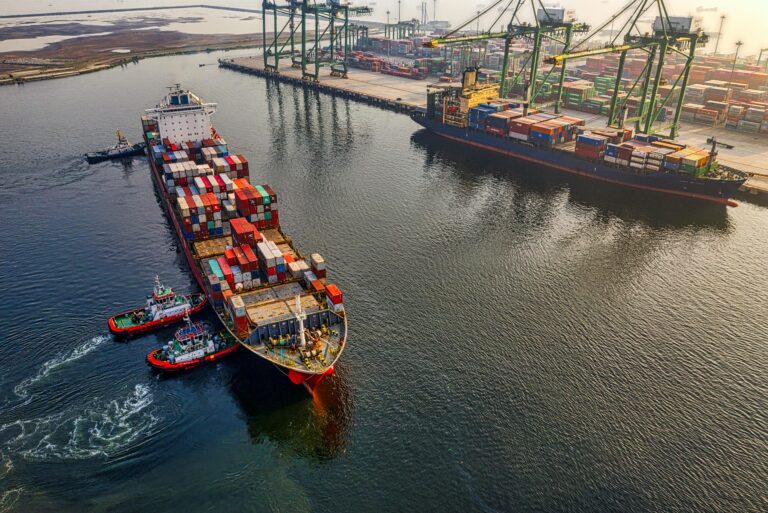For retailers selling into international markets, a major component of offering a great customer experience is ‘reverse logistics’ or ecommerce returns. Returns are an inevitable part of the shopper journey and a good returns policy is often a key factor in shoppers choosing to purchase from a particular international retailer. According to Narvar’s ‘The State of Returns’ report, 62% of shoppers would ‘buy again’ from a brand that offers free returns or exchanges and 69% wouldn’t buy from an online retailer if they must pay for return shipping.
In the US, return deliveries were estimated to cost $550 billion in 2020 – which is a 75.2% increase over 2016. To implement a reverse logistics process that is as efficient and cost-effective for the retailer as possible requires a well-thought-out strategy that encompasses many areas.
Here are 6 to consider:
1. Returns management
The return of goods involves multiple processes – from the customer returning the merchandise either directly to the retailer’s warehouse or a returns centre (if consolidating returns in other or multiple markets), inspection, verification and destruction services, refunds, airfreight or shipping to the country of export, customs processing, and final mile delivery to the retailer.
The overarching key to customer satisfaction with returns is an easy to follow process with no conflict in information from different sources. According to Meghan Rhindress, Senior Manager, Global Sourcing, ESW,
It’s best to have a really clear process and shopper experience. Shoppers can very easily go through the returns process and find there are different instructions on labels in the box versus the website, which causes confusion. Make it a really seamless, easy procedure to return, so if they do return, they won’t mind purchasing again because the process is simple.
2. Inventory management
Having stock in transit between delivery and return, and not available to resell, affects inventory availability and can have a knock-on effect on sales. Careful inventory management and real-time monitoring of the returns pipeline can help to ensure stock isn’t held for too long in returns centres making it unavailable for reselling. This is particularly pertinent for seasonal or limited-edition stock.
3. Returns Centres
In-country, or regional, returns centres can provide a range of return processing services, including opening and validating the return, inspection of the goods, destruction of certain items and more. Goods can be consolidated and shipped back to the retailer on a schedule that supports their inventory needs. Having a local returns centre can reduce costs and improve customer experience in several ways.
Firstly, the returns centre can facilitate receiving the returns and therefore expedite processing refunds. This means customers receive their refunds more quickly and have a better experience. Using a local returns centre means shoppers don’t have to ship their return internationally. That could result in weeks of waiting for a refund. That is clearly an inferior shopper experience that leads to frustration and lower likelihood of a repeat customer.
Additionally, a returns centre can consolidate returns and ship them at a cadence that is most efficient for the retailer. Such a cadence could be weekly if there are enough packages. But for a smaller amount of returns, monthly might be more appropriate. This will save the retailer money by bulk-shipping rather than shipping smaller amounts more frequently.
In a survey, Intermec found that 52% of returns centre managers don’t know what to do with returns. They’re unsure whether to send returns to the retailer, discarded the items or hold as inventory. A clear process for returns centre staff to follow is essential.
ESW has 50 returns centres around the world. All returns centre managers are fully trained in the correct returns process for each retailer. This ensures swift returns processing, excellent customer experience and peace of mind for the retailer.
4. Merchandise and financial reconciliation
Through merchandise and financial reconciliation, a retailer knows that returns have been processed properly. A returns centre should send a manifest with all returns detailed. This allows manual checking of the merchandise returned, and enable financial reconciliation for the inventory and related refunds.
5. Customs Clearance
Consolidated shipments of returns are subject to duties and taxes when being returned to the country of export. The retailer, in conjunction with the carrier broker who handles imports, can apply for these duties and taxes to be returned. This is accomplished through the Returned Goods Relief scheme. It is important to work with the carrier broker who imported the goods and will, therefore, have all the necessary paperwork as the Importer of Record and Exporter of Record information must match.
Duty drawback, where duty is paid on import to the shopper’s country, can in some markets be reclaimed when the product is returned. This enables the shopper to receive a full refund, including all import charges.
6. Customer service
Customer service is important throughout the whole shopper journey and it is no different with reverse logistics. Being able to track returns for customers, facilitating speedy refunds and managing queries in a timely fashion are all important parts of the shopper experience. An excellent provision of each will lead to returning customers and increased revenue.
Conclusion
Returns are a fundamental part of the logistics process. Therefore managing the many parts inherent in the process well is crucial in delivering an excellent customer experience to shoppers. A seamless returns process is necessary to the successful operation of an ecommerce business. Implementing a great returns process is essential to success – both domestically and internationally.
To find out more about how ESW can help your international business contact one of our team.





